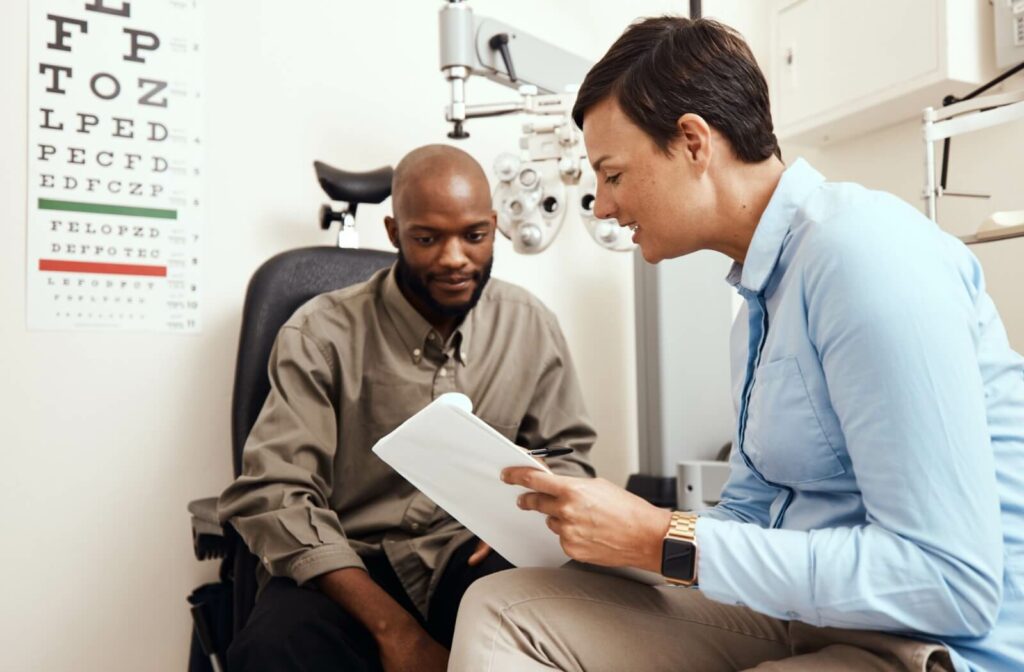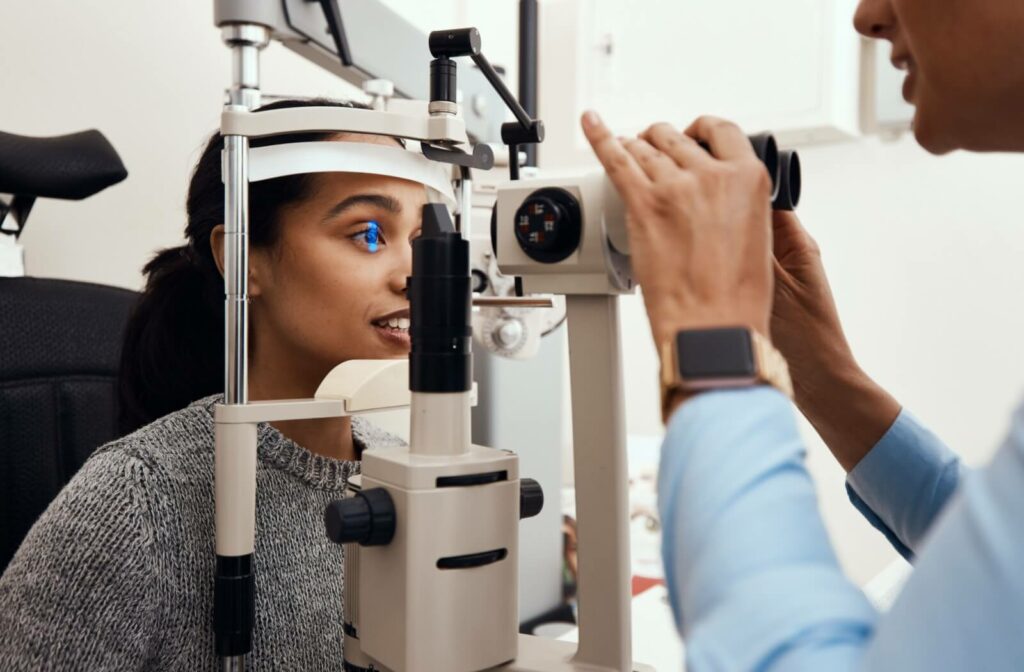When was the last time you had an eye exam? If you’re thinking, “My eyesight’s fine, I don’t need to see my optometrist”—think again. Many people underestimate the power of a simple eye check-up. Your eyes are more than just your window to the world, they’re your doctor’s window to your overall health.
Regular eye exams can help detect a variety of diseases early, from vision conditions like glaucoma, AMD, and cataracts; to general health concerns like diabetes, heart disease, and high blood pressure. This early diagnosis can give you a head start on treatment and management. Not bad for a simple visit.
Why Regular Eye Exams Matter
Eye exams aren’t just about checking if you need glasses or contacts. They’re an essential part of preventive healthcare. Regular eye exams can help detect diseases that affect more than just your vision. Sight tests are a key part, of course, but this is what makes an eye exam “comprehensive.”
We go through a range of tests at each check-up to get a full view of your current eye health, including:
- Visual acuity test: The visual acuity test measures how well you can see letters or symbols on a chart from a set distance. It’s one of the most common tests and helps determine if you need corrective lenses.
- Refraction test: This test checks how light travels through your eye to determine your prescription for glasses or contact lenses. It’s essential for those with blurry vision or difficulty focusing.
- Visual field test: This test measures your peripheral vision and can detect blind spots and other visual field abnormalities. It’s particularly important for diagnosing glaucoma.
- Retinal exam: A retinal exam evaluates the health of the retina, the layer of cells at the back of your eyes that senses light and sends signals to your brain. This test is essential for detecting conditions like diabetic retinopathy and macular degeneration.
- Eye pressure test: This test, also known as tonometry, is vital for detecting glaucoma.
- Eye movement test: An eye movement test evaluates how well your eyes coordinate and the strength of your eye muscles. It’s crucial for children so we can diagnose conditions like strabismus.
Regular checkups allow us to recognize any areas of concern and track how your vision is changing. Some eye conditions are genetic, so we may customize the tests based on your medical history.

Uncovering Early Signs of Eye Diseases & Conditions
Many eye diseases can occur without noticeable symptoms in the early stages. You may not even realize anything is wrong until the damage is irreversible. An eye exam is simply letting a professional use precise diagnostic tools to look for the signs that you can’t see on your own.
Some of the eye diseases your optometrist can detect include:
Glaucoma
Glaucoma is a group of eye diseases that can cause vision loss and blindness. It’s often called the “silent thief of sight,” a haunting nickname that reveals how it can sneak up on so many people. The most common form, open-angle glaucoma, is caused by increased eye pressure. This slowly damages your optic nerve.
Fortunately, an optometrist can perform an intraocular pressure (IOP) test to see if your eye is under pressure.
Cataracts
As we grow older, things about our body change—our eyes are no different. When the lenses in our eyes become cloudy, that is called cataracts. More than 50% of Americans over the age of 80 have cataracts, or have had surgery to remove cataracts.
You may notice some cloudy vision on your own, but we can examine the lens directly and suggest early treatment options.
Age-Related Macular Degeneration (AMD)
AMD affects central vision and is primarily caused by aging, as well as certain lifestyle habits such as what you eat. When it happens slowly, you may have trouble recognizing it. But when it happens rapidly, as in the case of wet AMD, you may notice your eyesight slipping away. Prompt treatment is vital.
While it’s not reversible, we can slow its progression with supplements. We can detect AMD early by examining the macula, the central part of the retina.
Blepharitis
Blepharitis is a skin condition that causes your eyelids to become inflamed, typically due to bacteria building on their surface. It can irritate your eyes and block your tear glands, resulting in dry eyes.
Dry Eye Disease
Speaking of dry eyes, millions of Americans live with dry eye disease. It occurs when your eyes don’t produce enough tears or the quality of your tears is poor. Eye exams can help diagnose and manage this condition effectively.
How Eye Exams Detect Systemic Diseases
It’s remarkable how much your eyes can tell you about your health. They don’t just tell us how your vision is doing, they can even reveal signs of systemic diseases.
Your eyes could be the first indicator of:
- Diabetes
- Heart disease
- High blood pressure
- High cholesterol
- Rheumatoid arthritis
- Thyroid disease
Book Your Eye Exam Today
Detecting these diseases early can make a significant difference in treatment outcomes. Regular eye exams are a crucial part of maintaining overall health. By catching these conditions early, you can manage them more effectively and reduce the risk of complications.Don’t wait until you have symptoms to schedule an eye exam. Make it a regular part of your healthcare routine. Take the first step towards better health today. Book your eye exam with Verona Vision Care and see the difference personalized care can make!




